Of all the cities I visited whilst on my Snoozing to Split trip, Zagreb was the one that I had the least time to explore. With my sleeper train from Zurich arriving into the Croatian capital 40 minutes late (read about that here), I had just four hours to explore, eat and make it back to the station in time for the final train of the day to Split at 1518.
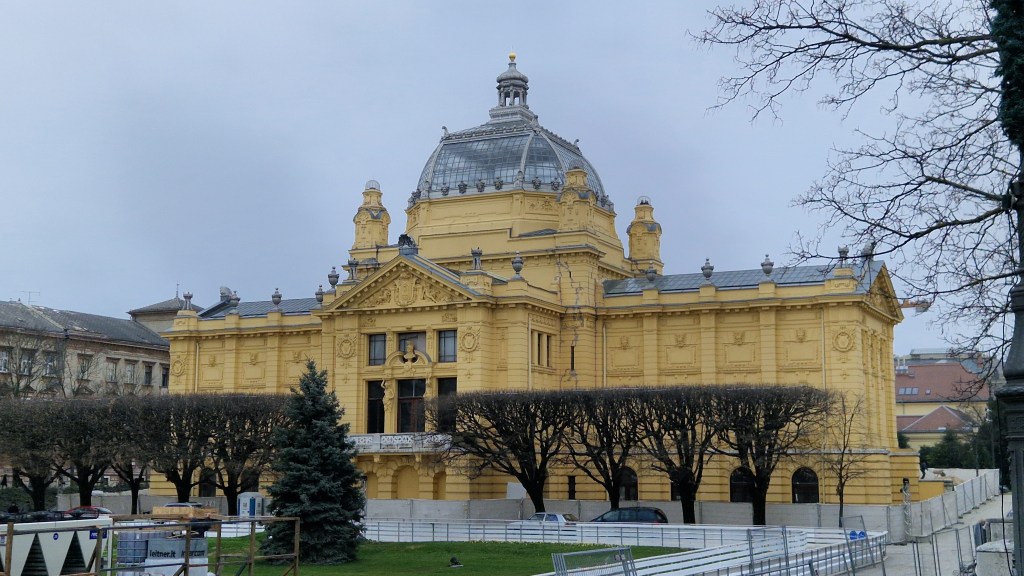
With my limited time, I decided to skip the capital’s tram network and walk everywhere, something that may seem counter intuitive. However, I had no cash, certainly nothing small, and had no idea how to buy a ticket for the trams as there were no ticket machines on the platform. Zagreb’s main square is just a 10-minute walk from the station and so by the time I’d have found a cash machine and worked out how to buy a ticket, it was quicker to walk.
Immediately outside the station, just over the road from the tram stop is a statue of a man on a horse. This is a monument to King Tomislav, the first king of Croatia and a man considered to be the founder of the medieval Croatian state, having united all the provinces into a single state. The monument sits at the south end of Trg Kralja Tomislava (King Tomislav Square), the first of three squares that form a green corridor from the station towards the city centre.
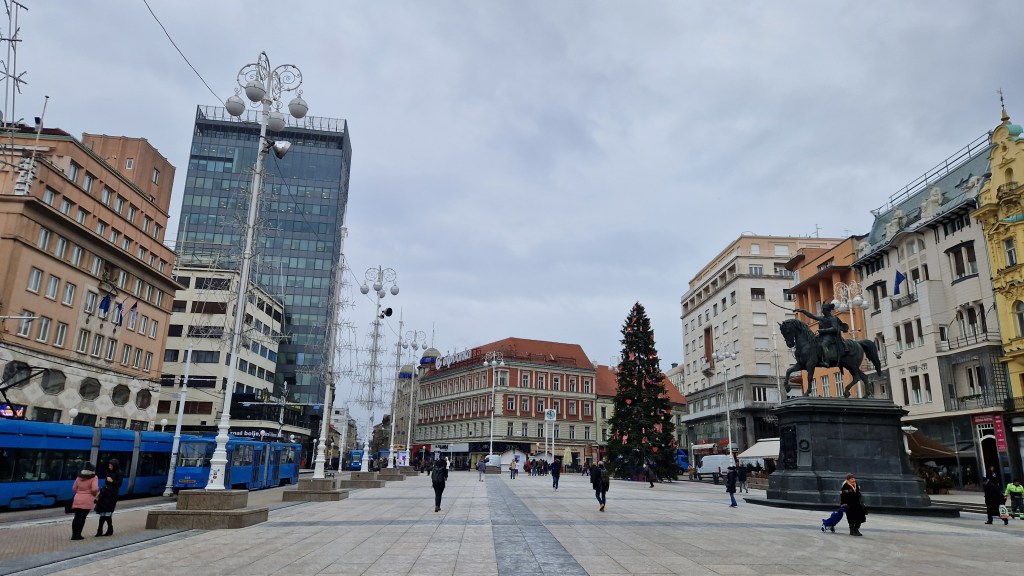
Located at the north end of Trg Kralja Tomislava is the Zagreb Art Pavilion, a building dating from the very end of the 19th century and Zagreb’s only purpose-built gallery. The Art Pavilion is south-east Europe’s oldest art gallery and throughout its history has hosted more than 700 exhibitions covering all genres and periods of art. Unfortunately, the Art Pavilion suffered damage during the March 2020 earthquake and has been closed for repairs since.
The other parks forming the green corridor from the station, Park Josipa Jurja Strossmayera and Park Zrinjevac were full of Christmas market booths and an ice rink that were in the process of being dismantled. At the south end of the middle park, Park Josipa Jurja Strossmayera, across the road from the Art Pavilion is the Monument to the Victims of Fasicsm. Unfortunately, other than it being by sculptor Frano Kršinić, I wasn’t able to find out much about this monument, although I did discover after my visit that there is also a square a couple of blocks away also dedicated to the victims of Fascism.

About 10 minutes after leaving the station I made it to Trg bana Josipa Jelačića, Zagreb’s central square, named after Josipa Jelačića, Ban (ruler) of Croatia in the mid-19th century and notable for his abolition of serfdom within the country. The square is the main meeting point for people within Zagreb and is traversed by seven tram lines, and is also part of the city’s pedestrian zone. During my visit the large Christmas tree was still sitting prominently in the square, a stones throw from the statue of Josipa himself.
From Trg bana Josipa Jelačića, it was time to head up to the old town, or upper town, situated on hills to the north of the modern city centre. Accessible by winding streets, steep steps, or the Zagreb Funicular, I of course headed for the lower station of the latter, ready to take a ride on one of the shortest funiculars in the world. First opened in 1890 the funicular was originally steam powered, although had an electric motor installed in 1934 before being closed for five years for repairs in 1969. Re-opening in 1974, the funicular is now classed as a ‘monument of culture’ as its retained the majority of original characteristics.
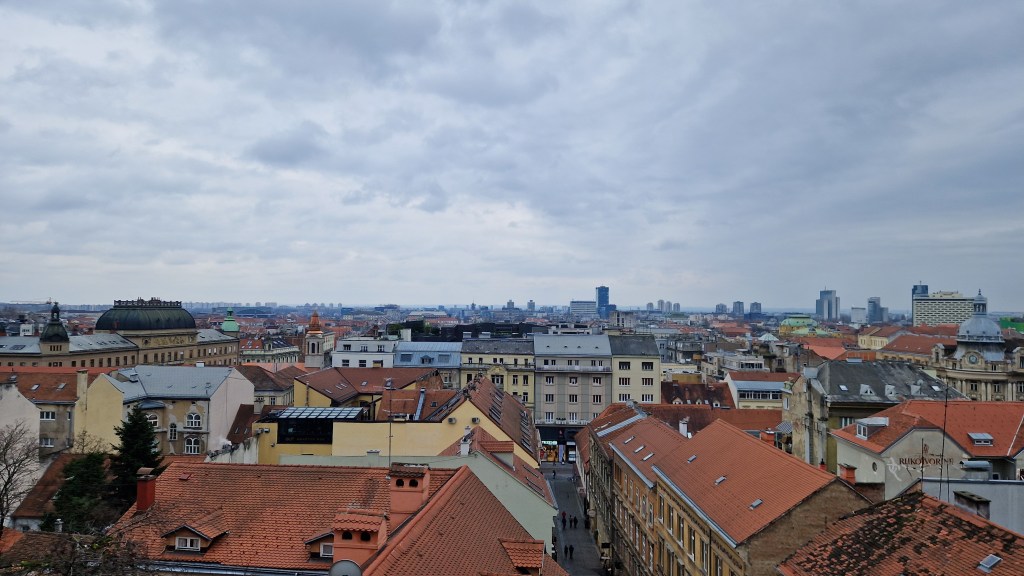
A ride on the Zagreb Funicular takes just 64 seconds, with departures every 10 minute throughout the day from 0630 until midnight. With a single ticket costing just 66 cents, a journey on the funicular is probably the one of the cheapest entries to a historical ‘attraction’ anywhere in Europe. Alighting at the top of the funicular, I weaved my way around a walking tour group and managed to find a spot to look out over the city just as the 12 o’clock gun went off and made me jump.
This ‘boom at noon’ comes from the Grič Cannon, hidden away on the fourth floor of the Lotrščak Tower, and was originally used as a signal for local monks to ring the bells to mark noon. Although this use has been superseded by more modern time keeping methods, the cannon is still fired to mark noon and has been fired regularly since January 1st 1877, only stopping during World War 1 and following the March 2020 earthquake.
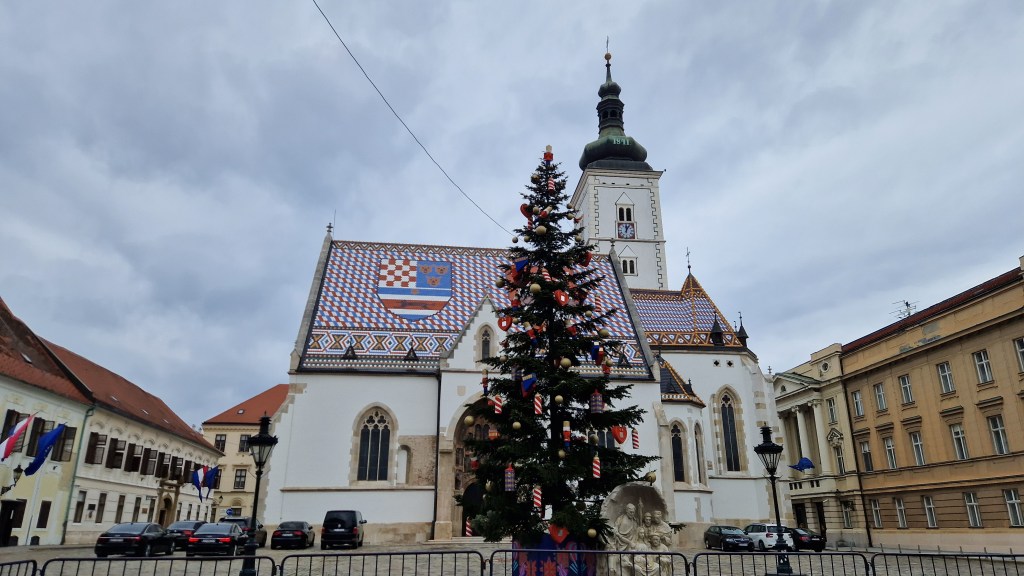
In the centre of the upper town is Trg svetog Marka, or St Mark’s square which is home to a number of government buildings as well as the Church of St Mark from which the square gains its name. With its colourful roof tiles depicting the coats of arms of Zagreb and the former Kingdom of Croatia-Slavonia, the Church of St Mark is one of the oldest architectural monuments in Zagreb. The church sits at the top of the street leading from the Lotrščak Tower and funicular station and so its colourful roof immediately attracts your attention as you arrive in the upper town.
If you walk east from the Church of St Mark, you’ll reach the Stone Gate, an entrance to the upper town originally dating from the mid-13th century although its current appearance dates from the 18th century. Inside the Stone Gate is a shire to the Virgin Mary, patron saint of Zagreb, and it is therefore considered a holy place amongst Catholics, with people regularly attending to pray and light candles. As medieval entrance gates go, this is probably one of the most unique I’ve seen on my travels, and is worth a visit for a moment of reflection and to see the uniqueness of the Stone Gate.
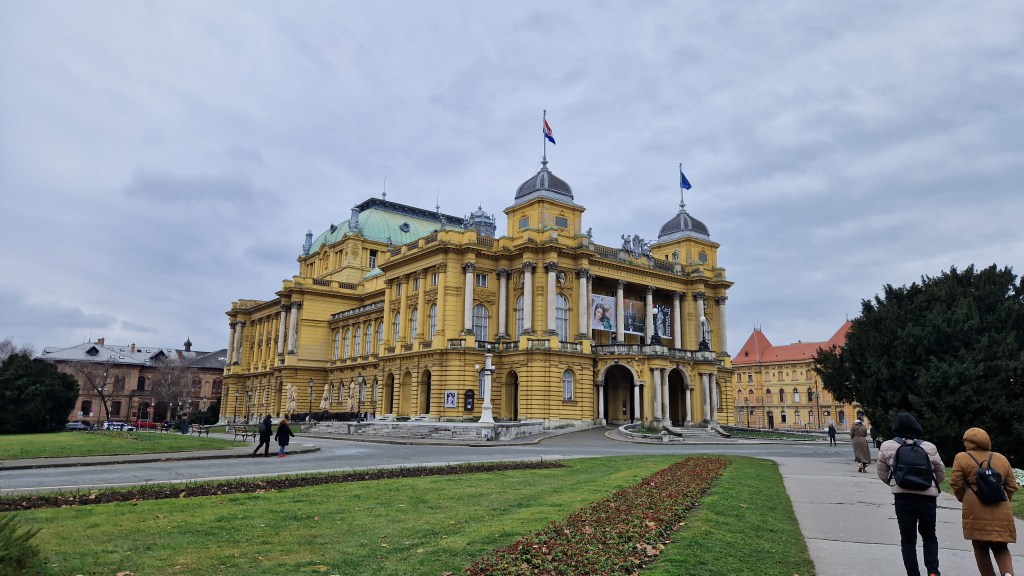
Heading back down to the lower town via another ride on the funicular, I headed slightly further west to another green corridor of parks and some more of Zagreb’s beautiful old buildings. Two buildings that fit within that category are the Museum of Arts and the Croatian National Theatre. The latter is a purpose-built building dating from the late 19th century that hosts the National Theatre, opera and ballet and is located on Republic of Croatia Square. The square certainly wasn’t known as that though when the National Theatre was opened by Austro-Hungarian emperor Franz Joseph 1 in 1895!
Zagreb’s Academy of Music dates back even further than the National Theatre, with its origins dating back to 1829 making it the oldest music school in Croatia. However, whilst the academy itself may be nearly two centuries old, it is housed in a much more modern building dating from 2014 which, with its colourful, wavy roof, seems very out of place amongst the other old buildings on Republic of Croatia Square.
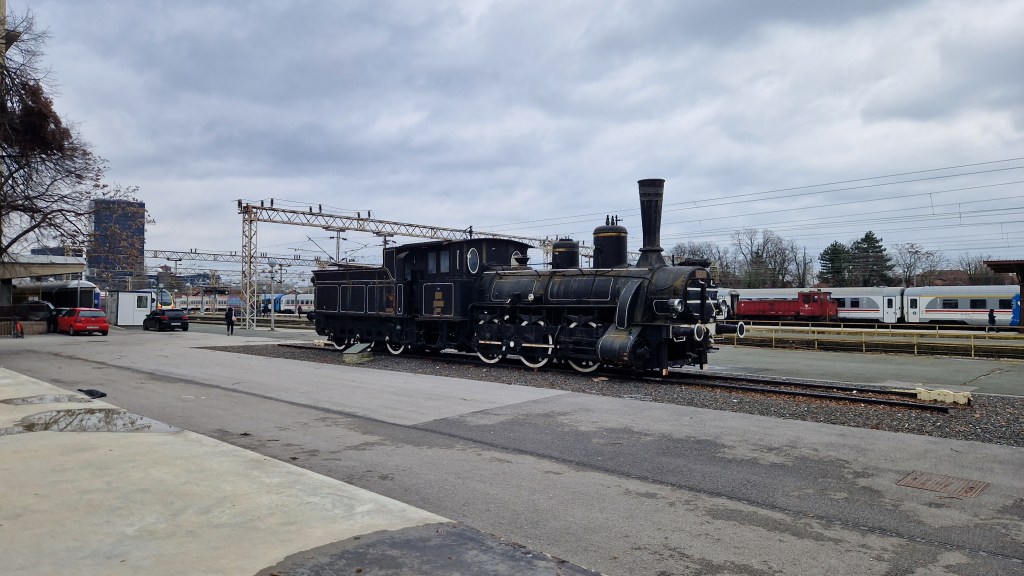
With my limited time in Zurich running out, it was time to find somewhere to eat and restore my energy before the long train journey to Split ahead of me. The first place that I had found online no longer seemed to exist and so some speed walking back across the city centre and passed the Art Pavilion to my back up option of Purger was required. This restaurant is frequented by locals (always a good sign) and was very down to earth with no unnecessary bells and whistles. I opted for the platter for one person (item 75 on the menu) along with a beer and I’ll be honest, that was almost too much food! In summary the food was good, the prices reasonable and the place full of locals, so I’d recommend.
From Purger I headed back to the station, taking a brief look at the old steam locomotive on a plinth outside, before collecting my bag and heading to the platform for my train to Split. This stop in Zagreb certainly didn’t do the city justice and I hope to revisit in the future, however the old town is beautiful and there are lots of cultural things to do that I didn’t even have chance to consider visiting. If I make it back, I’ll certainly have to make it a decent length visit!
One thought on “Zagreb – Little Vienna”